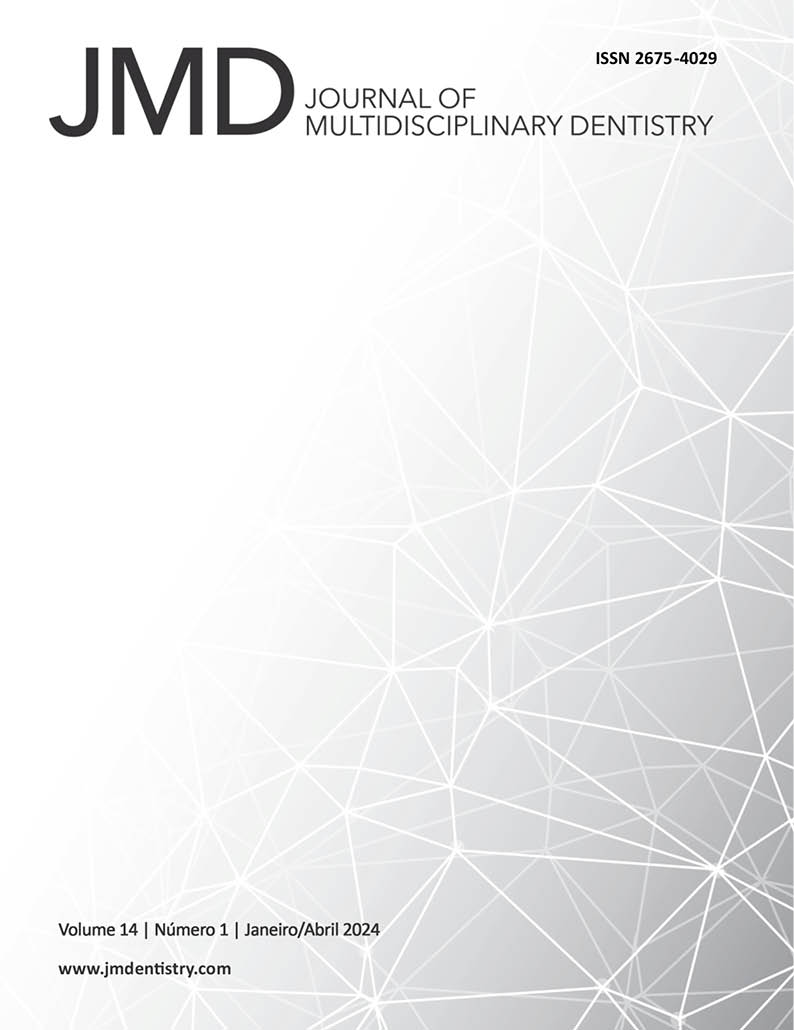Oral rehabilitation in patients with combination syndrome: literature review
DOI:
https://doi.org/10.46875/jmd.v14i1.1047Keywords:
Denture, complete, Denture, partial, removable, Dental prosthesis designAbstract
This work aimed to carry out a literature review on the oral changes developed by patients affected by combination syndrome, point out the causes that lead to this disorder and report prosthetic alternatives. This is a literature review of the narrative type. The search for articles was carried out digitally, in the Virtual Health Library, Scientific Electronic Library Online and Google Scholar databases, using the following descriptors: combination syndrome; Kelly syndrome; dentures. removable partial denture; dentures; bone resorption/diagnosis; maxilla; stomatognathic system; dental prosthesis planning/methods. Combination syndrome or Kelly syndrome presents itself from a set of striking characteristics that occur when a toothless maxilla opposes natural lower anterior teeth. This combination can promote bone loss in the anterior region of the maxilla, growth of tuberosities, papillary hyperplasia of the tissues of the hard palate and fibromucosa of the anterior region, extrusion of the lower anterior teeth and bone loss under the base of the lower partial denture. The treatment of combination syndrome aims to restore balanced occlusion to the patient, minimizing the occlusion load in the anterior region of the maxilla. It is concluded that it is essential to pay attention to the correct diagnosis of signs of destruction of the supporting tissues, as well as to establish the pre-prosthetic needs to enable adequate rehabilitative management of the patient. When establishing a treatment plan for these cases, the literature suggested implant-retained prostheses as best.


